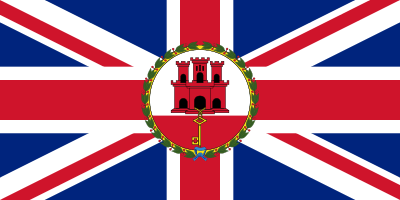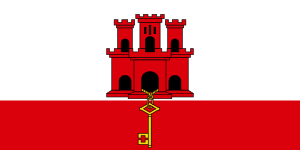Gerald Lathbury
| Sir Gerald Lathbury | |
|---|---|
 Lieutenant-General Sir Gerald Lathbury, here seen as Commander-in-Chief, East Africa, in May 1955. | |
| Nickname(s) | Legs |
| Born |
1906 Murree, India[1] |
| Died |
1978 Mortimer, Berkshire[1] |
| Allegiance |
|
| Service/branch |
|
| Years of service | 1926–1965 |
| Rank | General |
| Unit |
Oxfordshire and Buckinghamshire Light Infantry The Parachute Regiment |
| Commands held |
1st Parachute Brigade 3rd Parachute Brigade 16th Airborne Division Staff College, Camberley East Africa Command Eastern Command |
| Battles/wars |
Second World War |
| Awards |
Knight Grand Cross of the Order of the Bath Distinguished Service Order Member of the Order of the British Empire |
| Other work | Governor of Gibraltar 1965 – 1969 |
General Sir Gerald William Lathbury, GCB, DSO, MBE (14 July 1906 – 16 May 1978) was a British Army officer during the Second World War and later became Governor of Gibraltar.[1]
Military career
Lathbury was born into a military family. His father was Col. (Henry) Oscar Lathbury. He was educated at Wellington College and at the Royal Military College, Sandhurst. Lathbury was commissioned into the Oxfordshire and Buckinghamshire Light Infantry in 1926.[2] He was seconded to the Royal West African Frontier Force and Gold Coast Regiment between 1928 and 1932 and went to the Staff College, Camberley between 1937 and 1938.[2]
He served in World War II raising the 3rd Parachute Battalion in 1941 and the 3rd Parachute Brigade in 1943 and then taking command of the 1st Parachute Brigade in North Africa. Lathbury took part in the landings in Sicily tasked with the capture of the Primasole Bridge where he was wounded in the back and both thighs, although he remained in command until reinforcement arrived. He was awarded the Distinguished Service Order for this action. The citation reads:
| “ | This officer organised and led the attack by the 1st Parachute Brigade on a vital river crossing South of Catania in Sicily on the night 13th/14th July 1943. Although dropped by parachute 1.5 miles away, from a height of only 100 feet Brigadier Lathbury reached the objective, took part in its capture and directed the consolidation, during which he was wounded. Later, during a heavy counterattack by German parachutists, he remained at the bridge where he fought alongside his troops and provided an example and inspiration which contributed in no small degree to the success of the operation.[3] | ” |
Lathbury was still in command of the 1st Parachute Brigade during the Battle of Arnhem, part of Operation Market Garden in the Netherlands. On 18 September 1944 he was cut off from his command while in the company of Major-General Roy Urquhart when he was badly wounded in the left leg and his spine was chipped, leaving him temporarily paralysed. Lathbury was left in the care of a local Dutch family and became a prisoner of war. He concealed his rank, pretending to be a Lance Corporal. He escaped by simply walking out of the main doors of the hospital in which he was held. The Dutch resistance put him in touch with other hiding British soldiers. Lathbury, along with Lieutenant Colonel David Dobie and Major Digby Tatham-Warter, organised an escape across the Rhine. Lathbury and Digby crossed the Rhine on 22 October with one hundred and thirty-seven men linking up with Easy Company, 506th Parachute Infantry Regiment of the 101st Airborne Division. Brigadier Lathbury was portrayed by Donald Douglas in the 1977 film A Bridge Too Far.
After the War he went to Palestine for several years and then went on to the Imperial Defence College in 1948.[2] He was appointed General Officer Commanding 16th Airborne Division in 1948 and then Commandant of the Staff College, Camberley in 1951.[2] He went on to be Commander-in-Chief East Africa in 1955 and Director General of Military Training at the War Office in 1957.[2] He became General Officer Commanding-in-Chief for Eastern Command in 1960 and Quartermaster-General to the Forces in 1961.[2] Finally he was appointed Governor of Gibraltar in 1964; he retired in 1969.[2] He was described as radiating "a serene imperturbability" by Joshua Hassan who was a Chief Minister of Gibraltar. Lathbury's composure was invaluable at the time as the politics meant there was doubts over the status of Gibraltar with questions being asked at the United Nations. This made the locals nervous especially as there was a de facto freeze on take home pay in Gibraltar.[4]
He was also an ADC General to the Queen from 1962 to 1965 as well as Colonel Commandant of both the 1st Green Jackets (43rd and 52nd) and the Parachute Regiment from 1961 to 1965. In 1965 he participated in the third of the series of Harold Hall Australian ornithological collecting expeditions.
Family
In 1942 he married Jean Gordon Thin: they had two daughters. In 1972 he married Mrs Mairi Zoë Gibbs, widow of Patrick Somerset Gibbs.[1] He died in 1978. There is a Lathbury Barracks in Gibraltar.
References
- ↑ 1.0 1.1 1.2 1.3 1st British Airborne Division, Arnhem, September 1944
- ↑ 2.0 2.1 2.2 2.3 2.4 2.5 2.6 Liddell Hart Centre for Military Archives
- ↑ Pegasus Archive – Biography
- ↑ Joshua Hassan, 'Lathbury, Sir Gerald William (1906–1978)’, rev. Oxford Dictionary of National Biography, Oxford University Press, 2004 accessed 10 June 2013
| Military offices | ||
|---|---|---|
| Preceded by Roy Urquhart |
General Officer Commanding 16th Airborne Division 1948–1951 |
Succeeded by Geoffrey Bourne |
| Preceded by Alfred Dudley Ward |
Commandant of the Staff College, Camberley 1951–1954 |
Succeeded by Charles Jones |
| Preceded by Sir George Erskine |
GOC East Africa Command 1955–1957 |
Succeeded by Sir Nigel Tapp |
| Preceded by Sir James Cassels |
GOC-in-C Eastern Command 1960–1961 |
Succeeded by Sir Roderick McLeod |
| Preceded by Sir Cecil Sugden |
Quartermaster-General to the Forces 1961–1965 |
Succeeded by Sir Charles Richardson |
| Government offices | ||
| Preceded by Sir Alfred Ward |
Governor of Gibraltar 1965–1969 |
Succeeded by Sir Varyl Begg |

